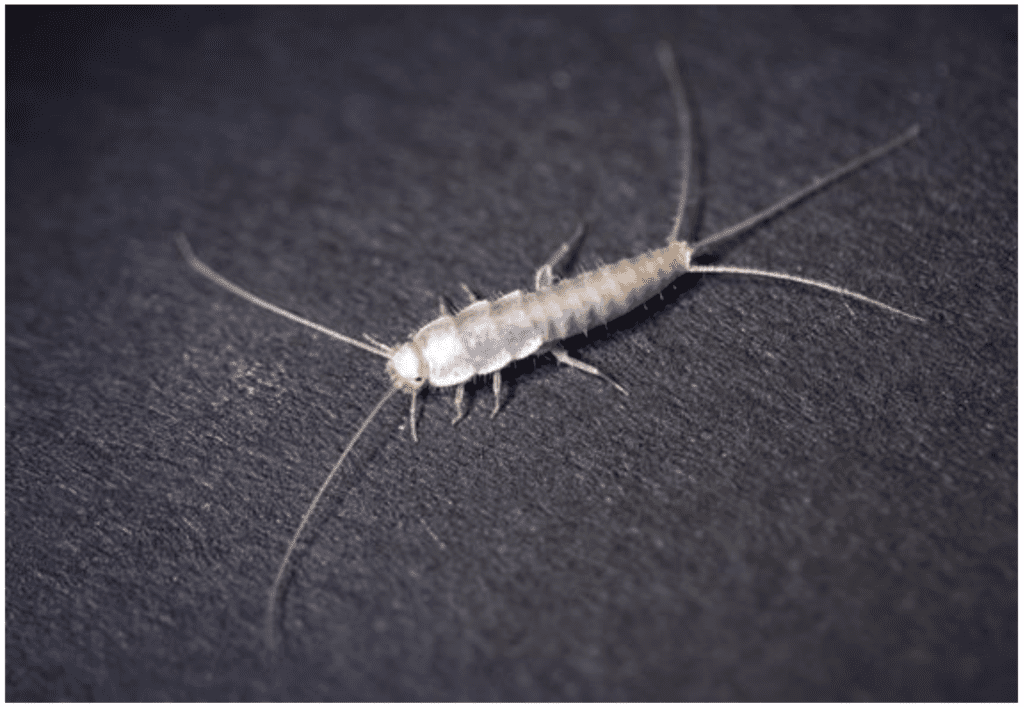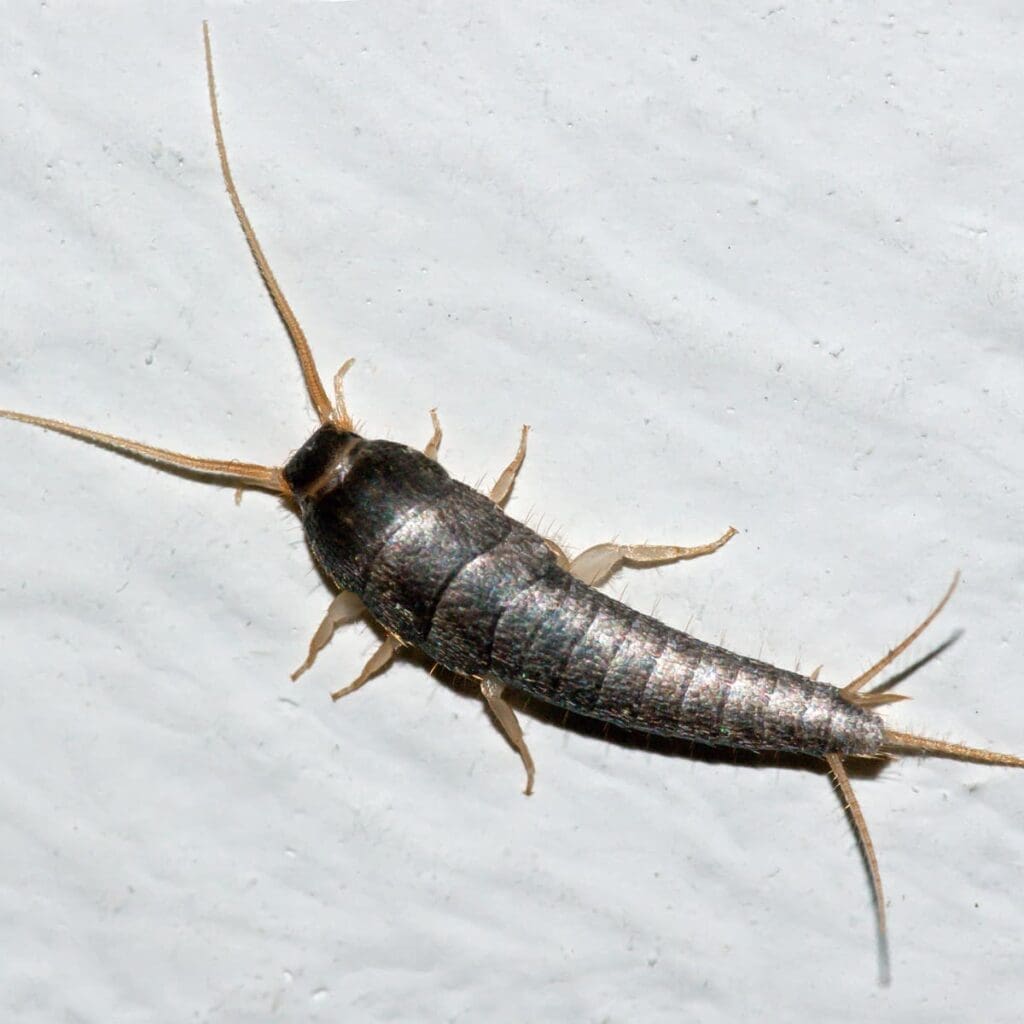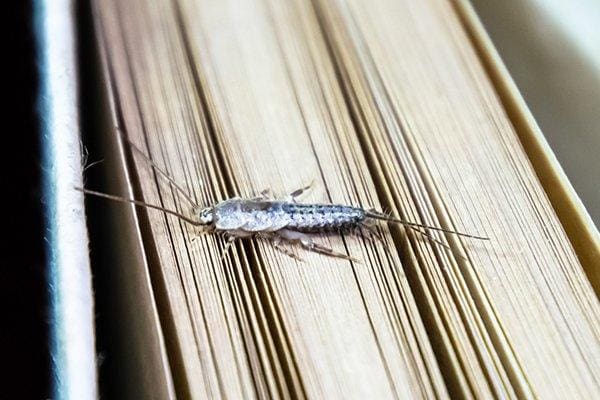Have you ever spotted a tiny, fast-moving creature scuttling across your bathroom floor and wondered what it could be? Well, let me introduce you to the mysterious world of silverfish! These peculiar creatures, with their silvery scales and swift movements, have puzzled homeowners for ages. In this article, we will explore the habits of silverfish and provide you with effective control methods to keep these unwanted guests at bay. So, grab a cup of tea and get ready to embark on a fascinating journey into the intriguing world of silverfish!

Introduction
Welcome to the mysterious world of silverfish! These tiny creatures may seem harmless at first glance, but they can cause quite a nuisance if left unchecked. In this comprehensive article, we will explore everything you need to know about silverfish, their habits, signs of infestation, health risks, and effective control methods. By the end, you’ll be equipped with the knowledge to protect your home and maintain a pest-free environment.
1. What are Silverfish?
1.1 Appearance
Silverfish are small, wingless insects that get their name from their silvery-gray color and fish-like movements. They have elongated bodies, measuring around 1/2 to 3/4 of an inch in length, and are covered in scales that give them a shiny appearance. Their bodies taper towards the rear and are flattened, allowing them to easily navigate through tight spaces.
1.2 Life Cycle
Silverfish have a unique life cycle that consists of three stages: egg, nymph, and adult. The female silverfish lays eggs in small batches, typically in hidden crevices or cracks. These eggs take approximately two to eight weeks to hatch, depending on the environmental conditions.
Once hatched, silverfish nymphs resemble smaller versions of the adults but lack reproductive organs. They undergo multiple molts as they grow, shedding their exoskeleton each time. The nymph stage can last anywhere from three months to three years, depending on factors such as temperature and food availability.
Upon reaching adulthood, silverfish become sexually mature and can live for up to three years. They continue to molt throughout their lives, shedding their exoskeleton to accommodate growth.
1.3 Diet
Silverfish are known for their carbohydrate-rich diet. They are particularly fond of starchy and sugary substances such as glue, paper, books, clothing, wallpaper paste, and even dead insects. Given their ability to digest complex polysaccharides, they can survive for months without food, making them resilient creatures.
2. Habits of Silverfish
2.1 Nocturnal Behavior
Silverfish are primarily nocturnal creatures, preferring to carry out their activities under the cover of darkness. This behavior makes them difficult to spot during the day, as they seek shelter in dark corners, cracks, and crevices. They are rapid runners and can move swiftly across various surfaces, including walls and ceilings.
2.2 Preferred Environments
Silverfish thrive in damp, dark environments with temperatures ranging from 70 to 80 degrees Fahrenheit. They are commonly found in basements, attics, bathrooms, and kitchens, where humidity levels are typically higher. They are attracted to areas with moisture, making bathrooms and kitchens ideal habitats.
2.3 Damaging Habits
While silverfish do not pose significant threats to human health, they can cause damage to properties and belongings. Their feeding habits can lead to holes in clothing, damage to books, and paper goods. Moreover, they can contaminate food sources and leave behind droppings and scales, leading to unhygienic conditions.
3. Signs of a Silverfish Infestation
3.1 Physical Evidence
Identifying physical evidence is crucial in detecting a silverfish infestation. Look out for their shed exoskeletons, which resemble tiny scales and can often be found near their hiding spots. Silverfish droppings are another telltale sign, appearing as pepper-like stains or small black specks.
3.2 Damage to Property
Silverfish infestations may also become evident through property damage. These pests can leave irregular feeding marks on items such as books, wallpaper, and clothing. Keep an eye out for holes, notches, or yellowing stains that indicate their presence.

4. Health Risks and Concerns
4.1 Allergies and Asthma
Although silverfish are not known to carry diseases, their presence can trigger allergies and asthma in some individuals. Their shed exoskeletons and droppings can become airborne and potentially cause respiratory issues in sensitive individuals.
4.2 Contamination of Food
One of the primary concerns with silverfish infestations is food contamination. Since silverfish feed on a variety of starchy substances, they can contaminate food sources in the pantry. Consuming food that has been contaminated by silverfish can lead to gastrointestinal issues and foodborne illnesses.
4.3 Property Damage
The feeding habits of silverfish can cause significant damage to property and belongings. Paper goods, such as books, documents, and wallpaper, are particularly vulnerable to their destructive behavior. In severe infestations, they can leave behind holes and an unsightly appearance in books and wallpaper.
5. Preventive Measures
5.1 Maintaining Cleanliness and Hygiene
Keeping your home clean is the first line of defense against silverfish infestations. Regularly vacuuming and dusting can remove silverfish eggs and other potential food sources. Pay special attention to hidden areas such as behind furniture, under appliances, and in cracks and crevices where silverfish are likely to hide.
5.2 Controlling Moisture Levels
Since silverfish thrive in damp environments, it is crucial to control moisture levels in your home. Fix any leaks or plumbing issues promptly, and ensure proper ventilation in areas prone to humidity, such as bathrooms and kitchens. Using dehumidifiers or fans can also help reduce moisture buildup.
5.3 Seal Cracks and Entry Points
Silverfish can enter your home through even the tiniest cracks and gaps. Regularly inspect your property for cracks in walls, gaps around windows and doors, and holes in screens. Seal these entry points using caulk or weatherstripping to prevent silverfish from gaining access to your home.
5.4 Proper Storage of Food and Items
Properly storing food and items can minimize the risk of silverfish infestations. Store pantry staples such as grains, flour, and sugar in airtight containers to prevent silverfish from accessing them. Similarly, keep clothing, books, and other susceptible items in sealed plastic bags or containers to protect them from silverfish damage.

6. Natural Remedies for Silverfish Control
6.1 Diatomaceous Earth
Diatomaceous earth is a fine powder made from the fossilized remains of diatoms, a type of algae. It is an effective natural remedy for silverfish control. The powder contains microscopic shards that penetrate the silverfish exoskeleton, causing them to dehydrate and ultimately die. Sprinkle diatomaceous earth in areas with silverfish activity, such as cracks, crevices, and other hiding spots.
6.2 Boric Acid
Boric acid is another natural remedy that can be used to combat silverfish infestations. It works by disrupting their metabolism and ultimately causing death. Applying boric acid to infested areas can effectively control silverfish populations. However, it is important to use caution when using boric acid, as it can be toxic to pets and humans if ingested.
6.3 Essential Oils
Certain essential oils, such as lavender, cedar, and citrus oils, have shown repellent properties against silverfish. Mix a few drops of the chosen essential oil with water and spray it in areas prone to silverfish activity. While this may not eliminate an existing infestation entirely, it can help deter silverfish from entering your home.
7. Chemical Treatments and Professional Assistance
7.1 Insecticides
Chemical insecticides can be an effective option for controlling silverfish infestations. There are various sprays and dusts available that are specifically designed to target silverfish. When using chemical treatments, ensure you follow the instructions carefully and take necessary precautions to minimize exposure to humans and pets.
7.2 Hiring a Pest Control Professional
If your silverfish infestation is persistent or severe, it may be necessary to seek professional assistance. Pest control professionals have the expertise and tools to effectively treat and eliminate silverfish infestations. They can assess the extent of the problem and recommend the most suitable course of action for your specific situation.

8. Silverfish Control Products
8.1 Silverfish Traps
Silverfish traps are an effective and convenient way to monitor and control silverfish populations. These traps typically contain a sticky surface that attracts and traps silverfish. Place these traps in areas of high silverfish activity, such as bathrooms, kitchens, and basements. Regularly check and replace the traps when needed.
8.2 Insecticides
Insecticides specifically formulated for silverfish control can be an effective solution. These products are designed to kill silverfish on contact or have a residual effect, providing long-term control. Follow the instructions on the product label carefully and ensure proper ventilation during application.
8.3 Desiccant Dusts
Desiccant dusts, such as silica gel or boric acid powder, can be applied to areas with silverfish activity. These dusts work by absorbing moisture from the silverfish’s exoskeleton, leading to dehydration and death. Avoid applying excessive amounts, and keep them out of reach of children and pets.
8.4 Moisture Absorbers
Using moisture absorbers in areas prone to high humidity can help deter silverfish. These products typically contain materials that absorb excess moisture from the air, reducing the favorable conditions for silverfish. Place moisture absorbers in closets, basements, and other areas where humidity is a concern.
10. Conclusion
In conclusion, silverfish may be small, but they can lead to significant problems if left unchecked. By understanding their appearance, habits, and signs of infestation, you can take appropriate preventive measures to keep these pests at bay. From maintaining cleanliness and controlling moisture levels to exploring natural remedies and seeking professional assistance, there are various options available to control silverfish populations. Remember to choose the method that aligns with your preferences and the severity of the infestation. With a proactive approach and the right tools, you can successfully navigate the mysterious world of silverfish and enjoy a pest-free environment in your home.


I am Randy, the author behind PestControld.com. Drawing from decades of experience, I aim to provide valuable insights, expert advice, and practical recommendations to help you make informed decisions when assessing viable pest control solutions.